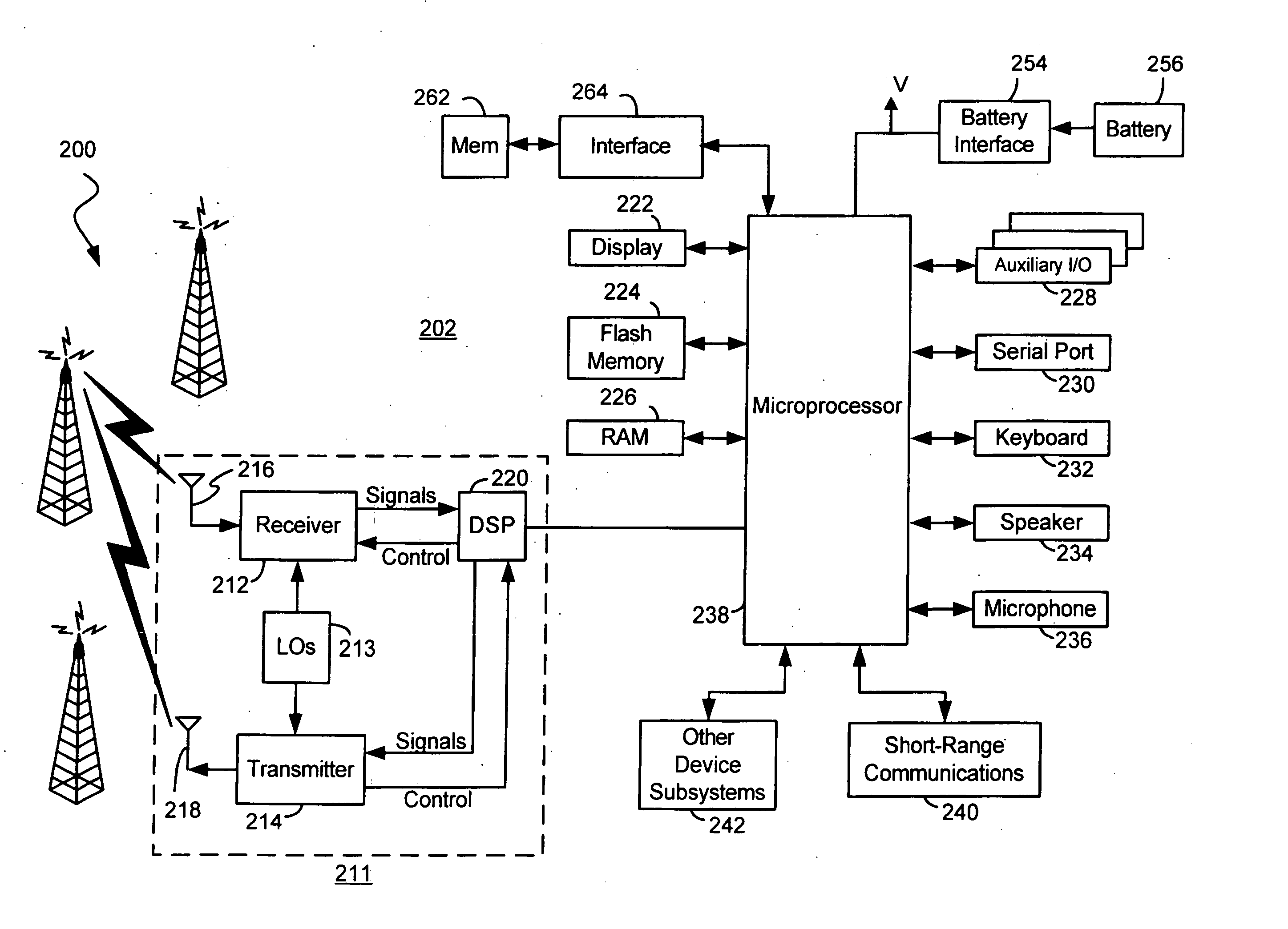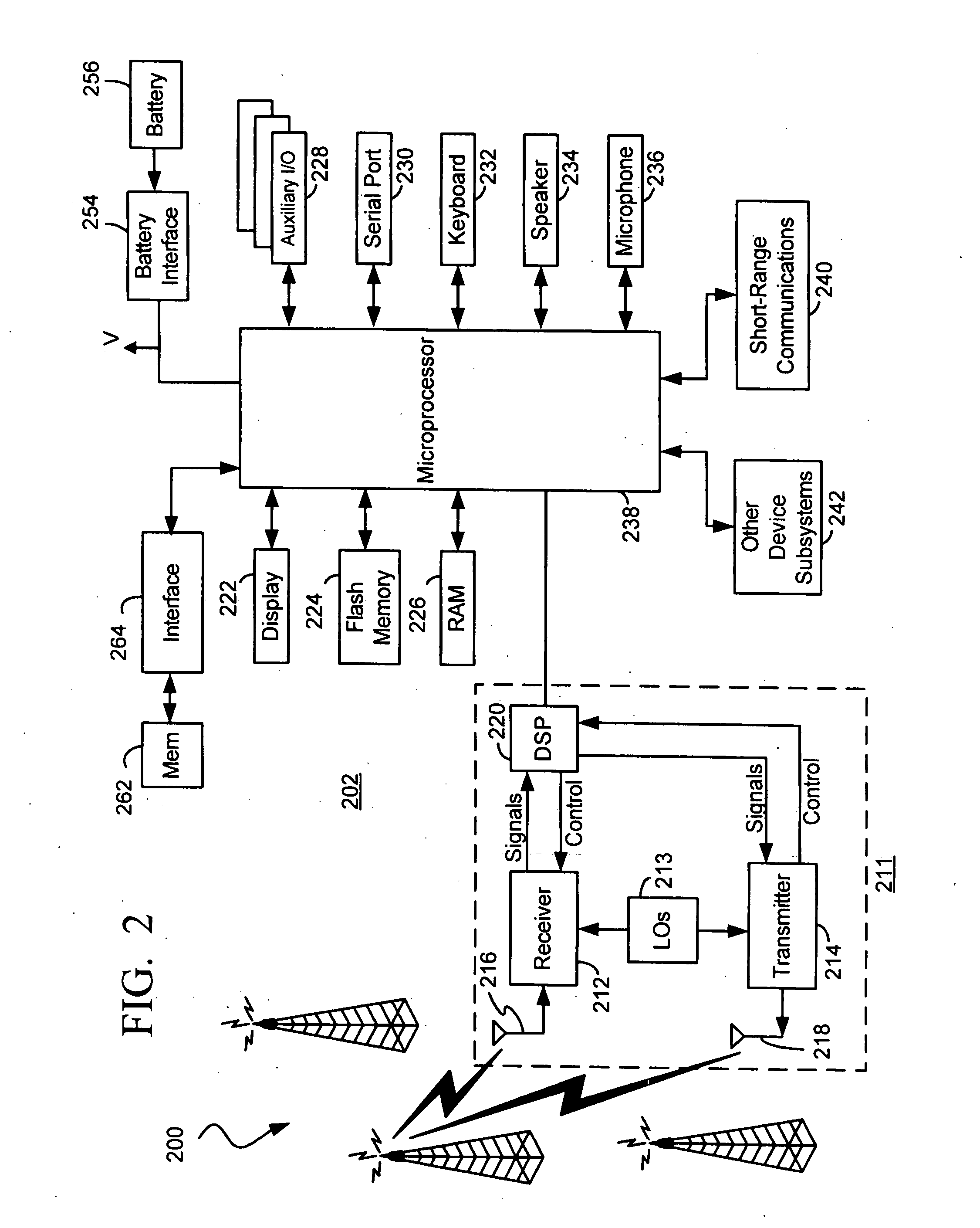Methods and apparatus for reducing a sampling rate during a sampling phase determination process
a sampling rate and sampling phase technology, applied in the field of digital communication, can solve the problems of high sampling rate, higher power consumption, and more expensive hardware (e.g., units and/or buffer memory)
- Summary
- Abstract
- Description
- Claims
- Application Information
AI Technical Summary
Problems solved by technology
Method used
Image
Examples
first embodiment
[0053]FIG. 8 shows circuitry which may be utilized to implement the techniques of the present application, as described in relation to FIGS. 5-7 above. The circuitry of FIG. 8 includes control circuitry or controller 810 (e.g. controller 106 of FIG. 1 or microprocessor 238 of FIG. 2), a frequency synthesizer 812 with phase control, and an analog-to-digital converter 820. Analog-to-digital converter 820 includes a sampler 802 and a quantizer 804. I and Q analog baseband signals are received-at inputs to sampler 802, which samples the signals to produce sampled I and Q baseband signals at its outputs. The sampled I and Q baseband signals are fed into inputs to quantizer 804, which quantizes the signals to produce digital I′ and Q′ baseband signals at its outputs. Sampler 802 has a clock input which is coupled to a clock output from frequency synthesizer 812. Frequency synthesizer 812 is adapted to produce, at its clock output, a sampling clock signal having one of a plurality of diffe...
second embodiment
[0056]FIG. 9 is circuitry which may be utilized to implement the techniques of the present application, as described in relation to FIGS. 5-8. The circuitry of FIG. 9 includes control circuitry or controller 810 (e.g. controller 106 of FIG. 1 or microprocessor 238 of FIG. 2), frequency synthesizer 812 having phase control, two analog-to-digital converters 820 and 920, an optimal phase determination block 908, and an information / signaling decoding block or decoder 910. Analog-to-digital converter 820 was described above in relation to FIG. 8 and operates in substantially the same way, except that it operates only on a received signal comprising the user or signaling information. I′ and Q′ outputs from quantizer 804 are coupled to information / signaling decoding block 910 to process information or signaling in a conventional fashion (e.g. despreading and decoding the information).
[0057] On the other hand, analog-to-digital converter 920 operates exclusively for the sampling phase deter...
PUM
 Login to View More
Login to View More Abstract
Description
Claims
Application Information
 Login to View More
Login to View More - R&D
- Intellectual Property
- Life Sciences
- Materials
- Tech Scout
- Unparalleled Data Quality
- Higher Quality Content
- 60% Fewer Hallucinations
Browse by: Latest US Patents, China's latest patents, Technical Efficacy Thesaurus, Application Domain, Technology Topic, Popular Technical Reports.
© 2025 PatSnap. All rights reserved.Legal|Privacy policy|Modern Slavery Act Transparency Statement|Sitemap|About US| Contact US: help@patsnap.com



